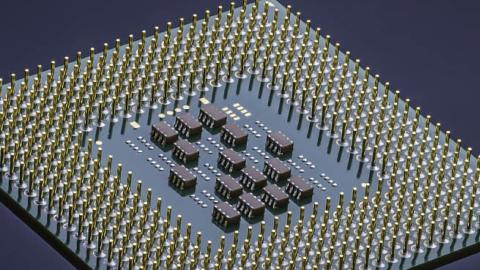Semiconductors are the “heart” of the American tech industry; it is the silicon in these chips from which Silicon Valley derives its name. Semiconductors function as the heart of any digital system, from cell phones to toasters, rendering them crucial to the security of any device. The United States, along with Taiwan, dominates the various facets of the semiconductor industry. All roads of modern tech—including wireless networks, artificial intelligence, and fighter jets—lead to Silicon Valley or Taipei. Now, China is clamoring for a seat at the table by way of kicking the legs out from under America’s high-tech throne.
Little, if any, cutting-edge semiconductor fabrication happens in the PRC today. The specialized tools used to produce chips, the software used to program them, and the materials used for testing all largely originate outside of China. Yet China accounts for 60% of the world's semiconductor consumption. The goliath of Chinese manufacturing relies heavily on semiconductor chips designed with American software and then fabricated using equipment sourced from American companies by the Taiwanese semiconductor giant TSMC, China's largest supplier. The heart of Chinese manufacturing, and subsequently its technology, is American and Taiwanese. This is an essential strategic advantage for the U.S., an advantage the Chinese Communist Party (CCP) plans to undermine.
In 2014, the CCP declared that by 2025, 75% of computer chips consumed in China would be built and designed domestically, eliminating current dependence on offshore chips. The CCP created a $29 billion investment fund to be funneled into the domestic semiconductor industry. Chinese "private" entities in consequential industries such as semiconductors can safely be assumed to be operating largely, if not totally, under state direction. In efforts to advance domestic industry, the CCP has sponsored IP theft, firm acquisition, and talent poaching. China's greatest weapon, however, is market access. The development of cutting-edge chips, which drives American and Taiwanese industry dominance, requires billions of dollars in research and development. Companies rely on revenue from the massive Chinese market to bankroll R&D. Western semiconductor firms, seeking market access, have been strong-armed by the CCP to transfer technical know-how through onshore manufacturing R&D and joint ventures.
A competitive Chinese semiconductor industry is not merely an economic threat to America’s technological dominance but poses a massive security threat to the U.S. and partner democracies, such as Taiwan. Allowing Chinese companies to fabricate the “heart” of modern technology would invariably allow the CCP access as well, rendering digital systems weapons for data theft and cyberattacks. Semiconductor technology is also an important means of leverage for the U.S. and Taiwan: if these chips become unavailable, the Chinese onshore industries that depend on them aren’t merely degraded; they’re destroyed. This is a means of providing a check on Chinese aggression in the South China Sea and maintaining Taiwan's sovereignty. If the PRC were to domestically develop and out-price Taiwan and the U.S. in the fabrication of semiconductors, global tech would become even more economically reliant on China, and essential technologies would become inherently insecure.
The CCP will undoubtedly continue its crusade, using its tried and true methods of stealing and strong-arming. In cooperation with Taiwan and other Asia-Pacific allies, the U.S. must take immediate action to slow the acquisition of semiconductor tech by the PRC and long-term actions to assure continued American leadership in technology.
In the short term, the U.S. should ban American companies, and companies using American tools, from the sale of advanced semiconductors, including associated manufacturing tools and software, to the PRC or PRC-affiliated entities. To offset the cost of losing the Chinese market, companies with an export license should be able to sell only generic chips to China, and the federal government should replace any other lost revenues for several years. The U.S. should correct its recent decline in tech investment by instituting a tidal wave of STEM-focused R&D funding, infrastructure, venture capital, and education, including a $50B subsidy for semiconductor R&D, as proposed by the Semiconductor Industry Association.
Moreover, the semiconductor supply chain must be built on firm economic and diplomatic ties between like-minded democracies. The closer these ties, the more impenetrable and innovative the semiconductor industry will become, maintaining the vibrancy of American and allied tech, keeping us ten steps ahead of the PRC. These actions will not only secure our digital devices from malicious intent but secure the continued preeminence of the American semiconductor industry.
Read in RealClear Defense















